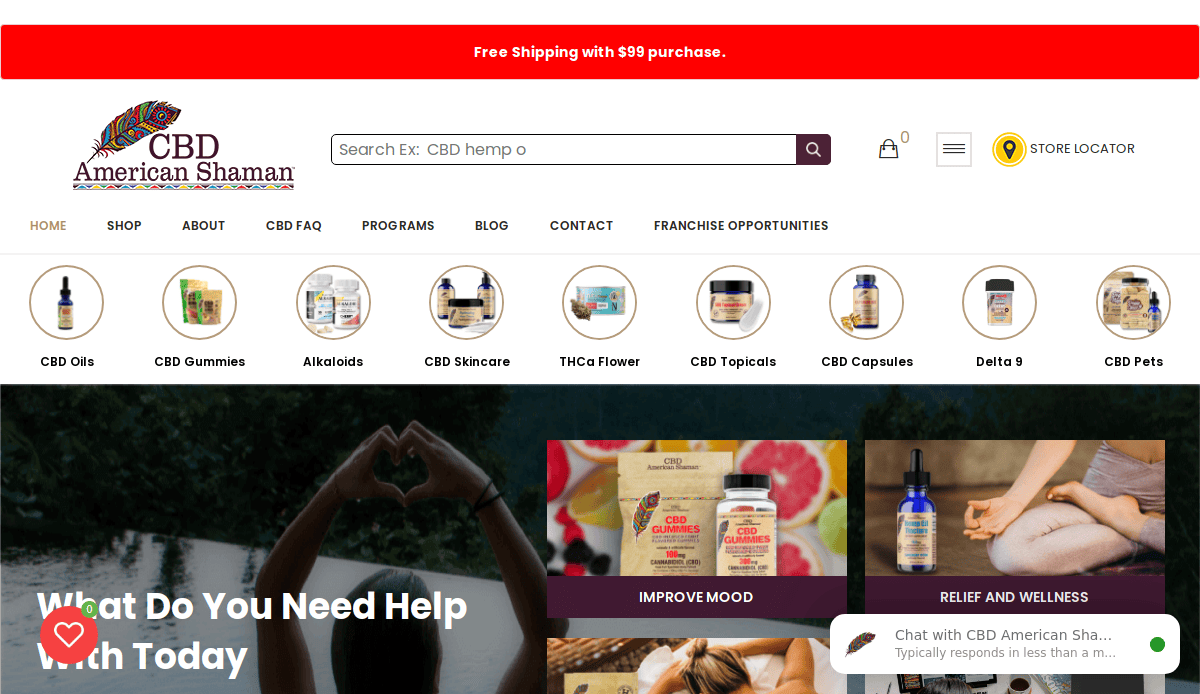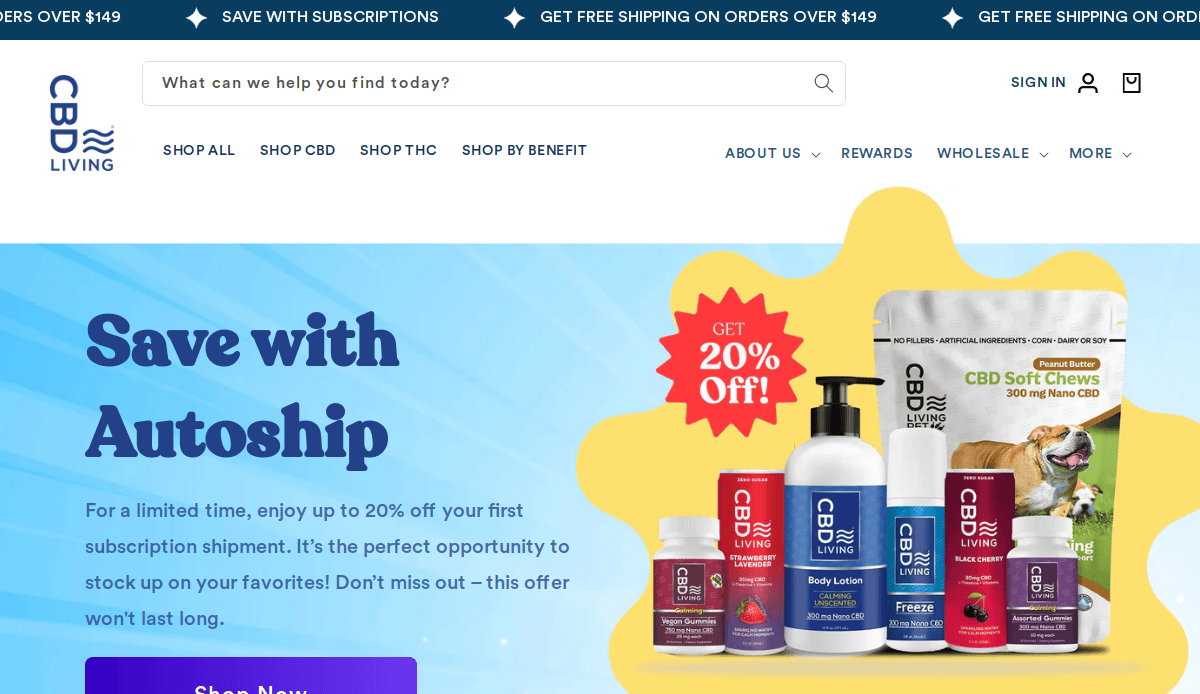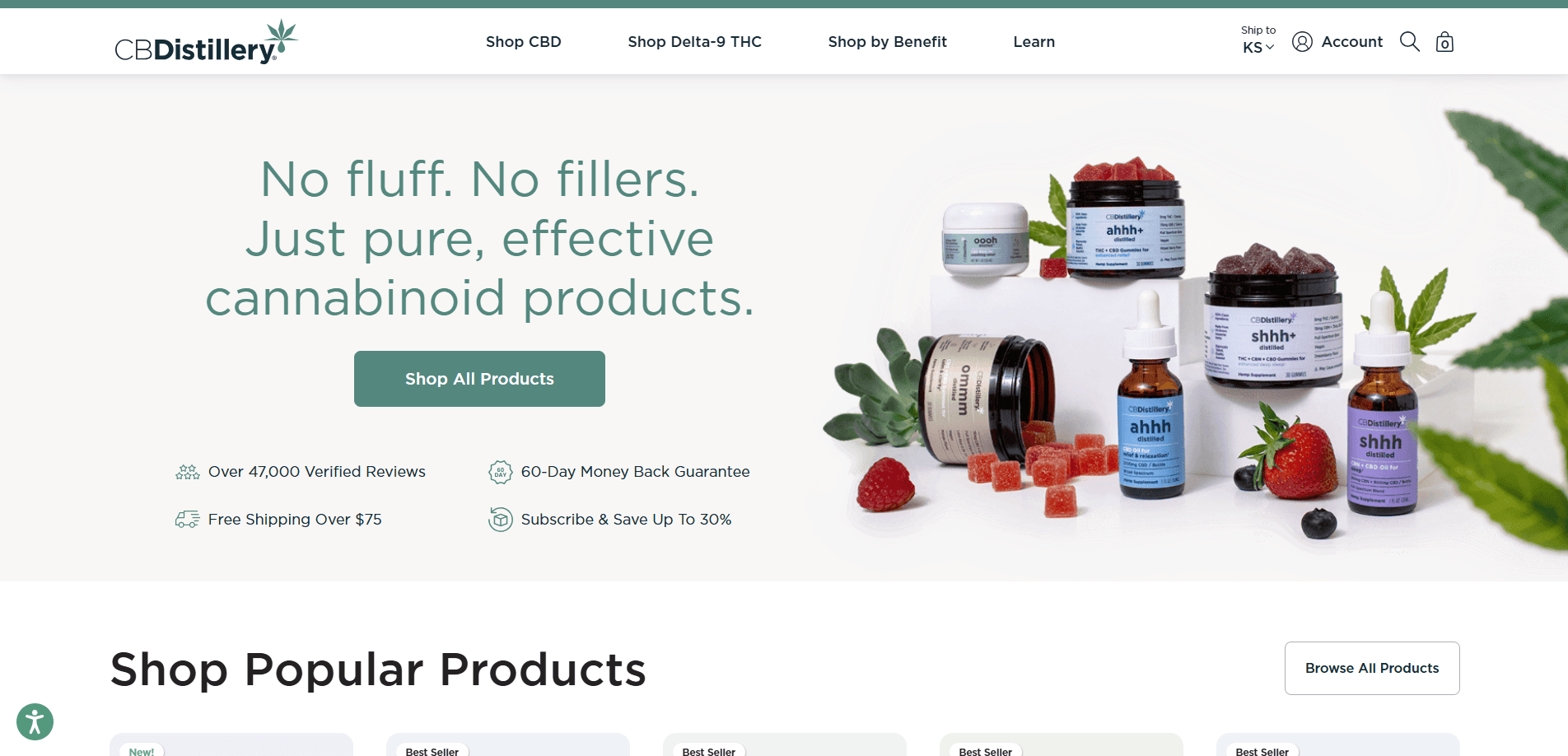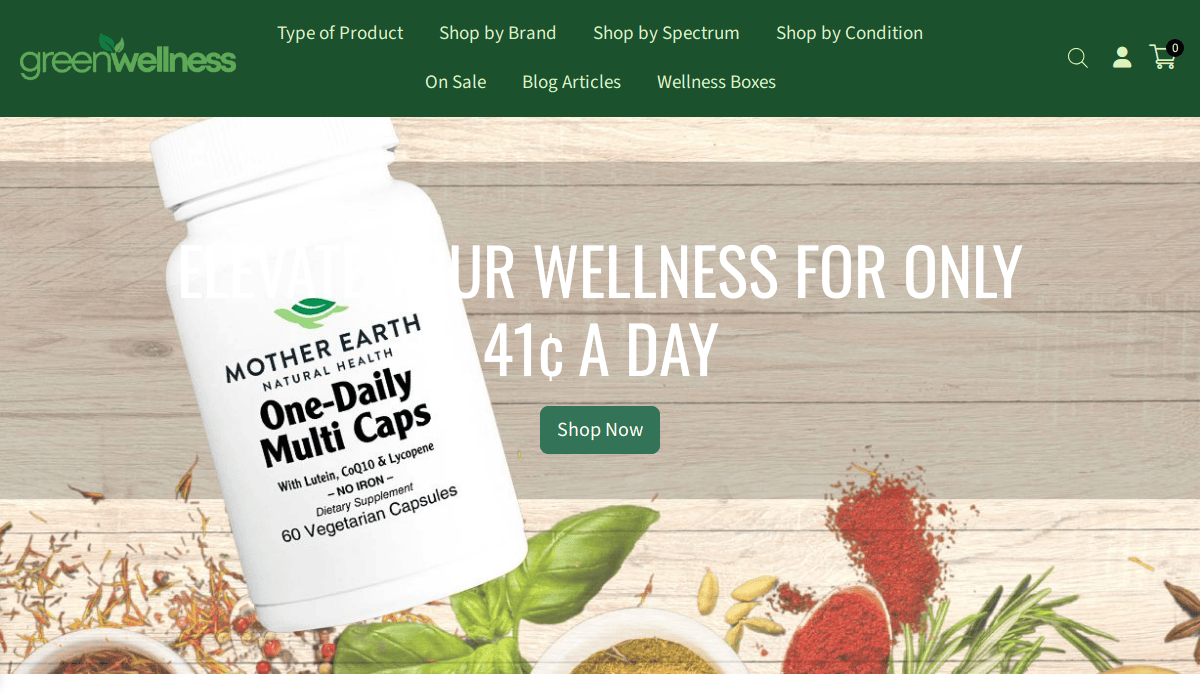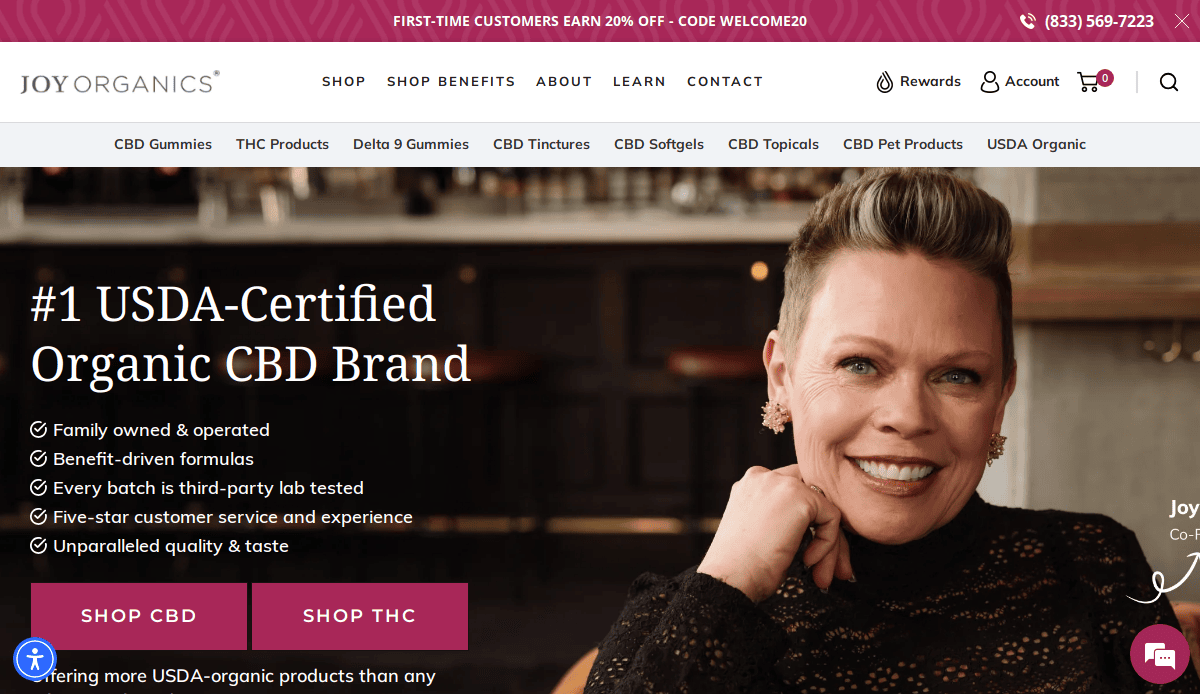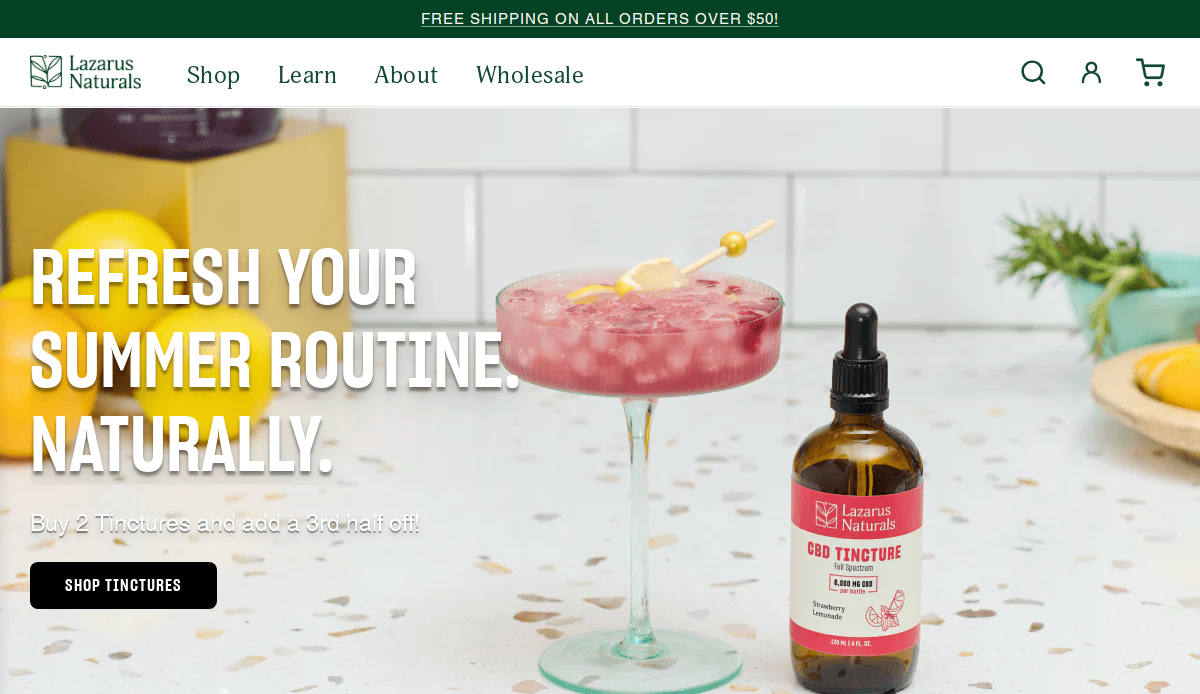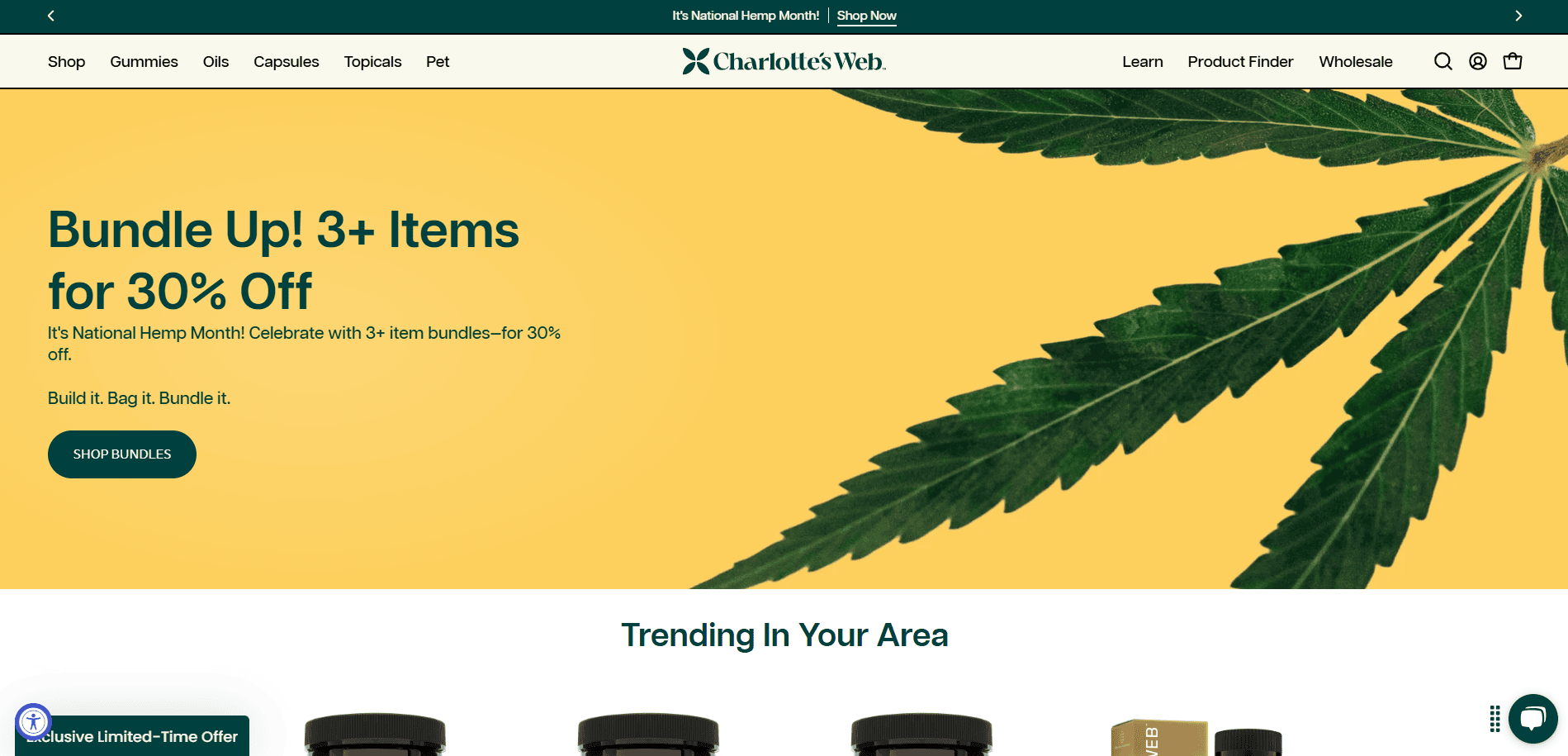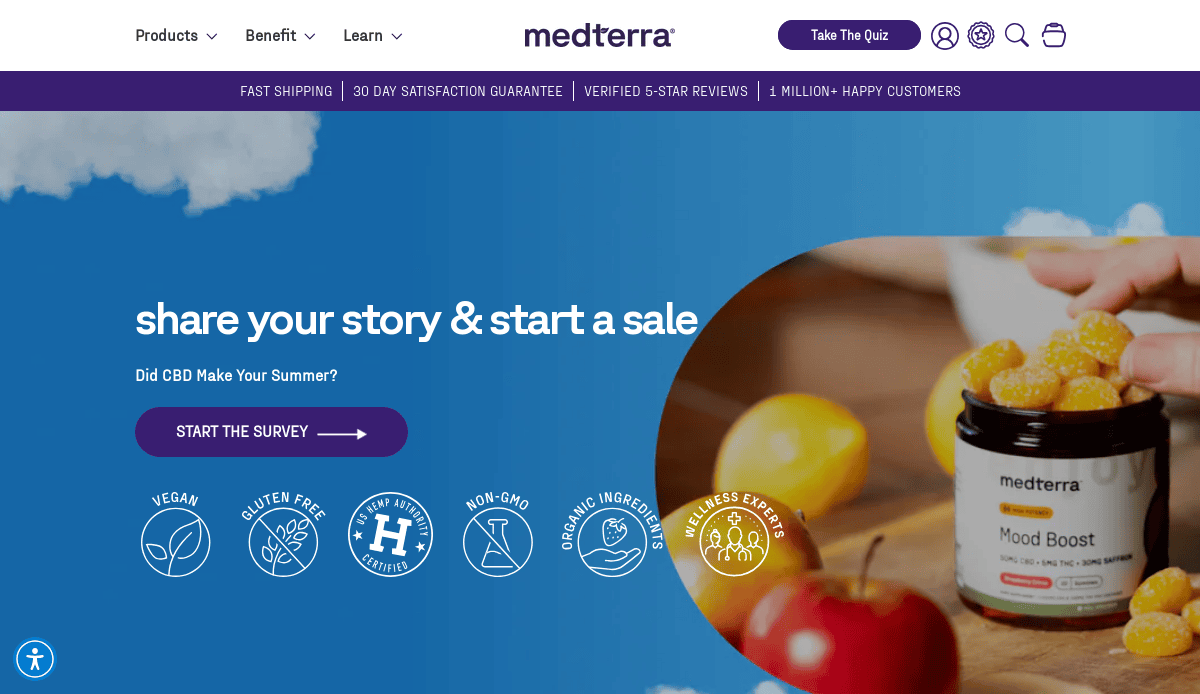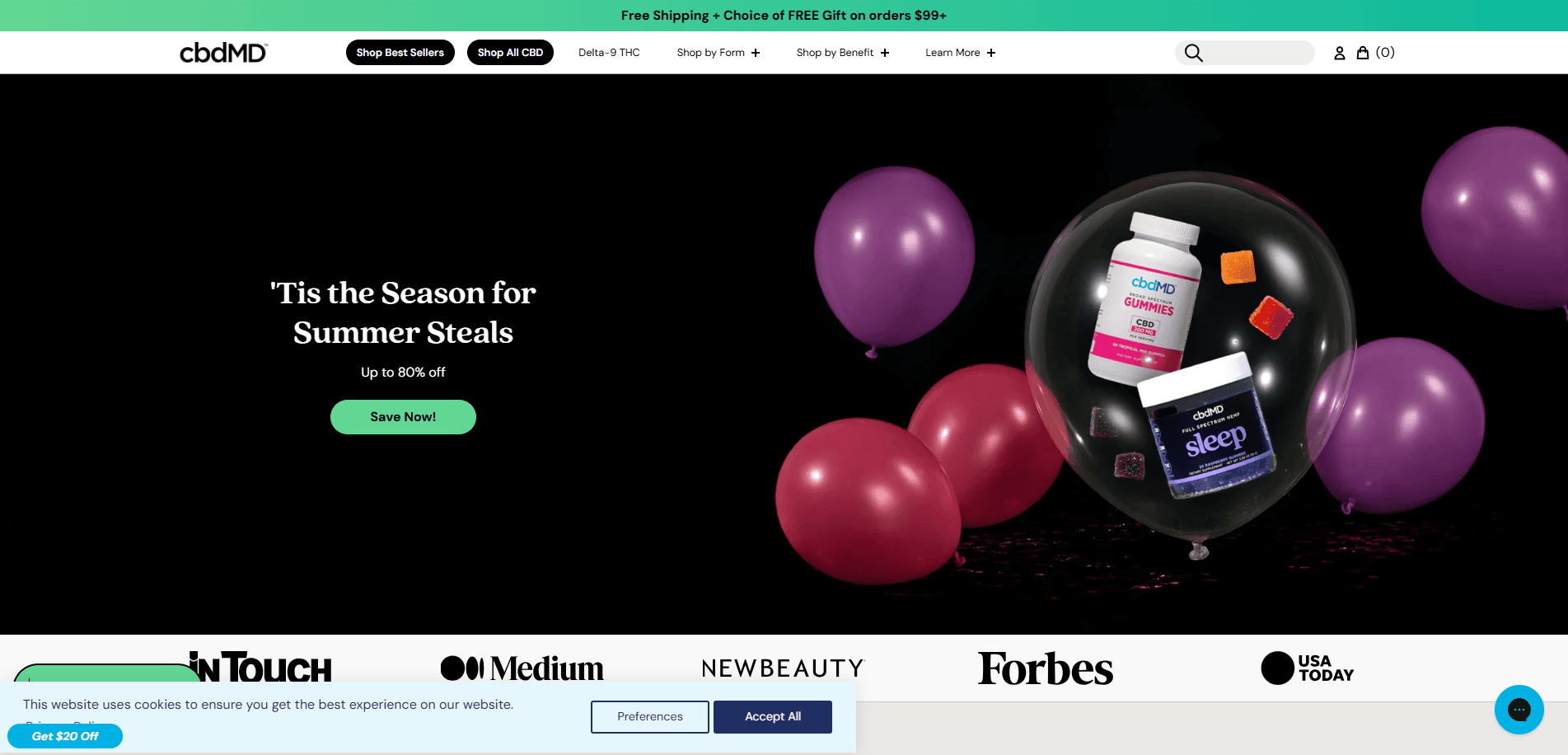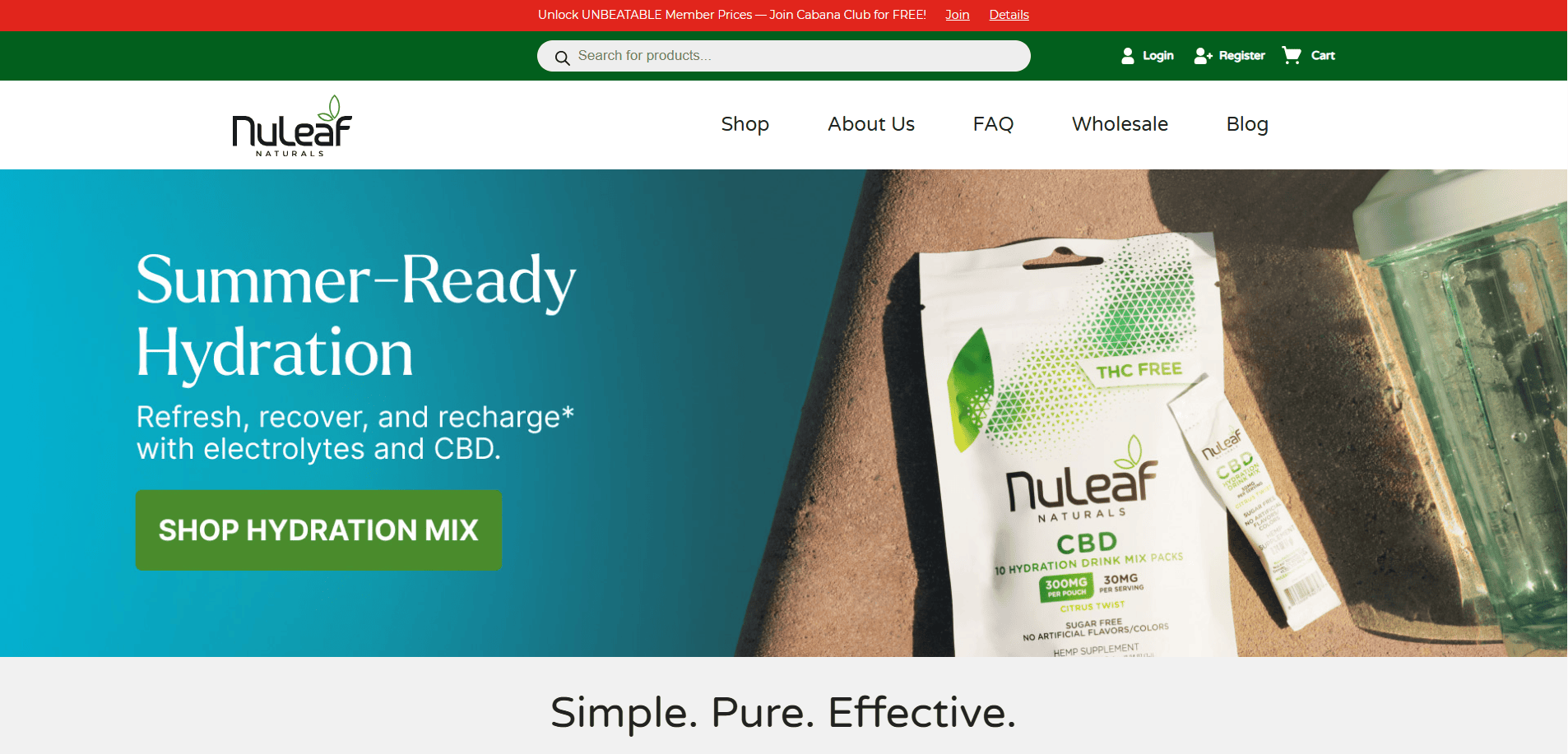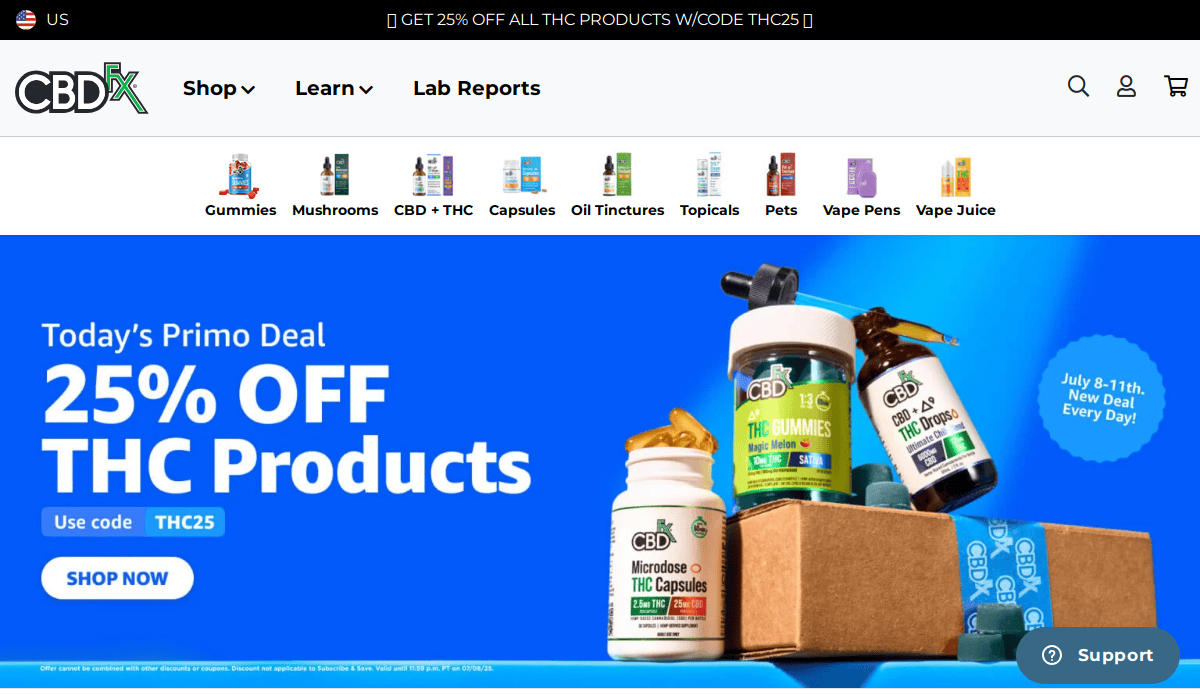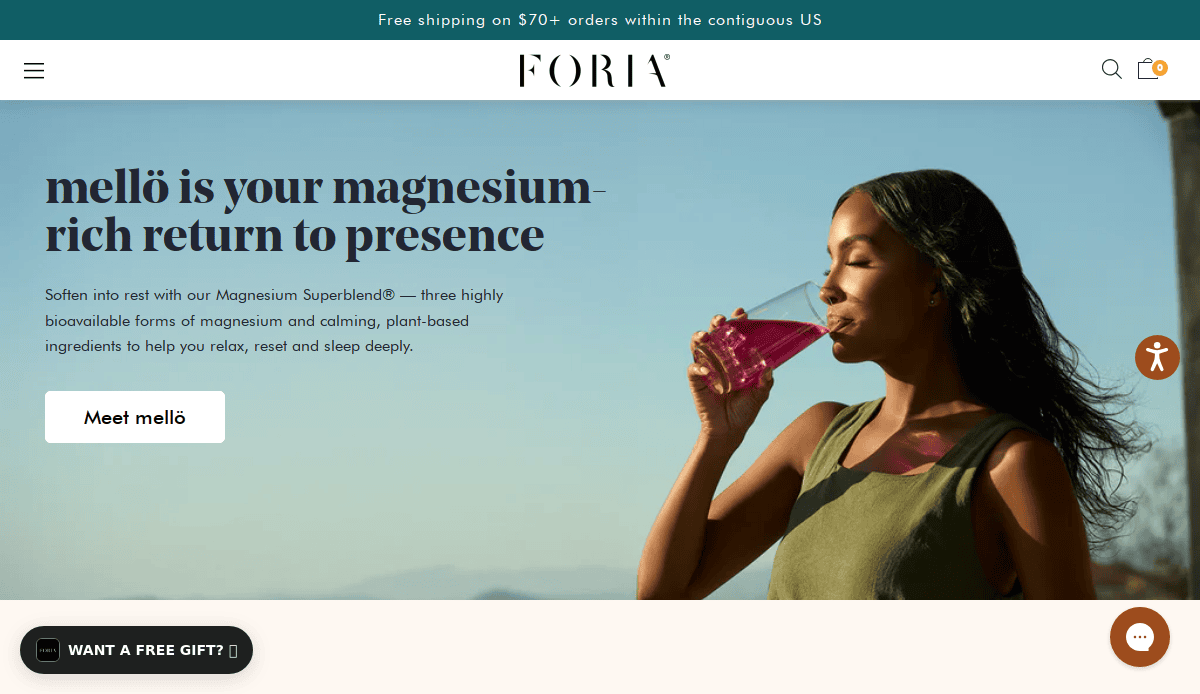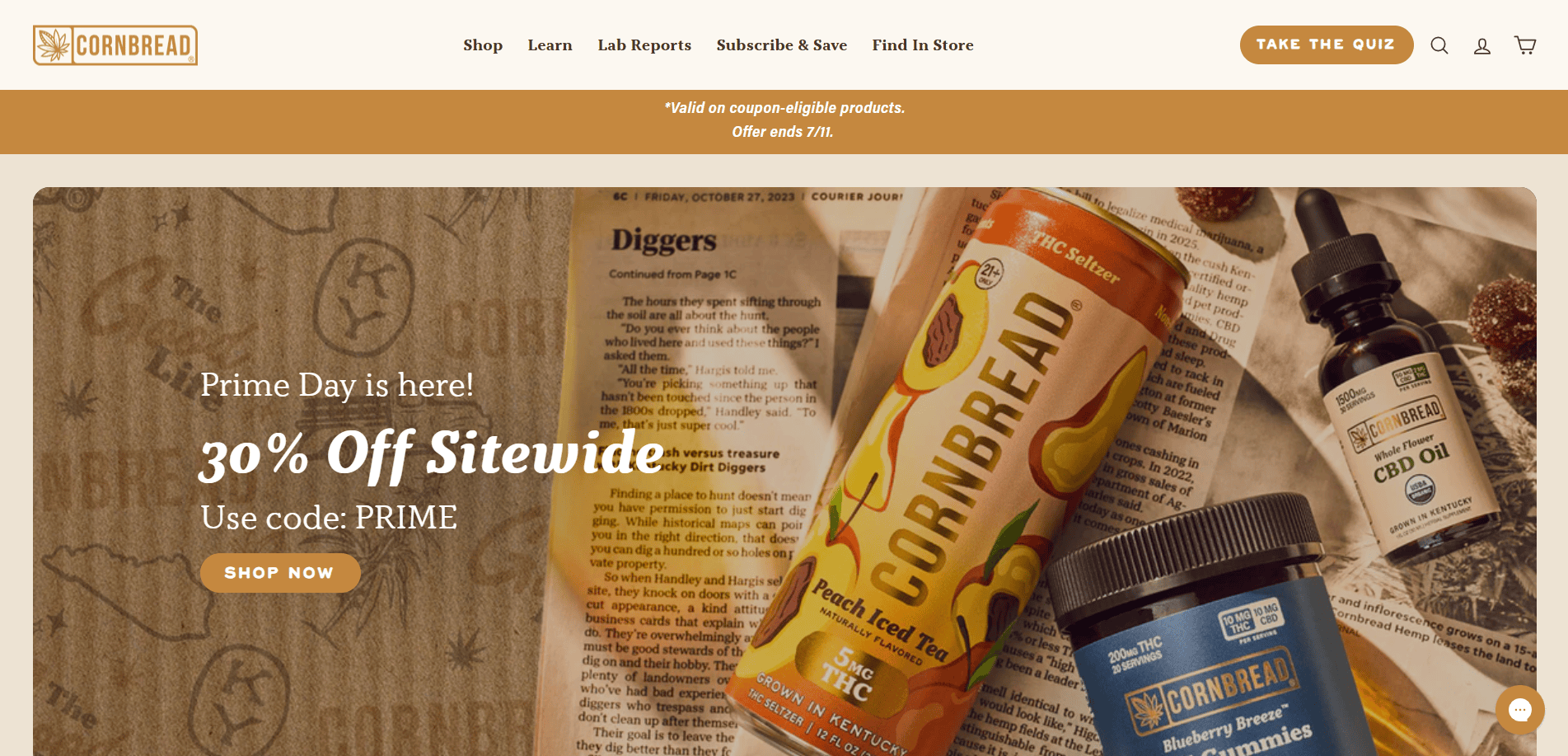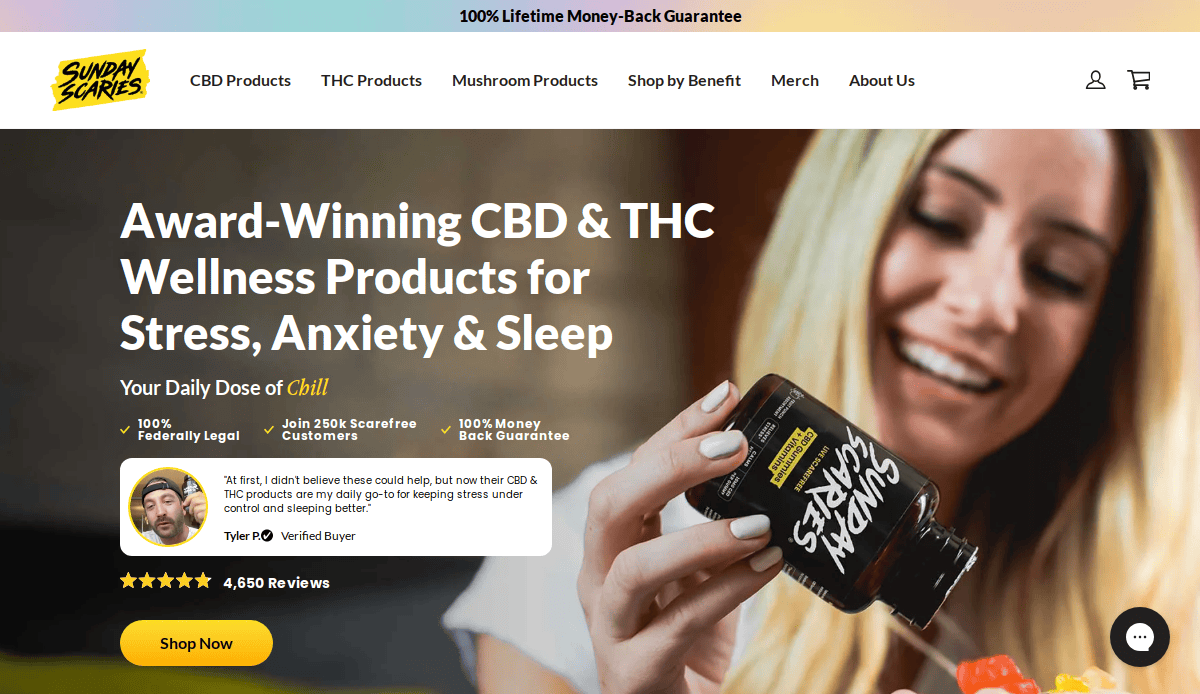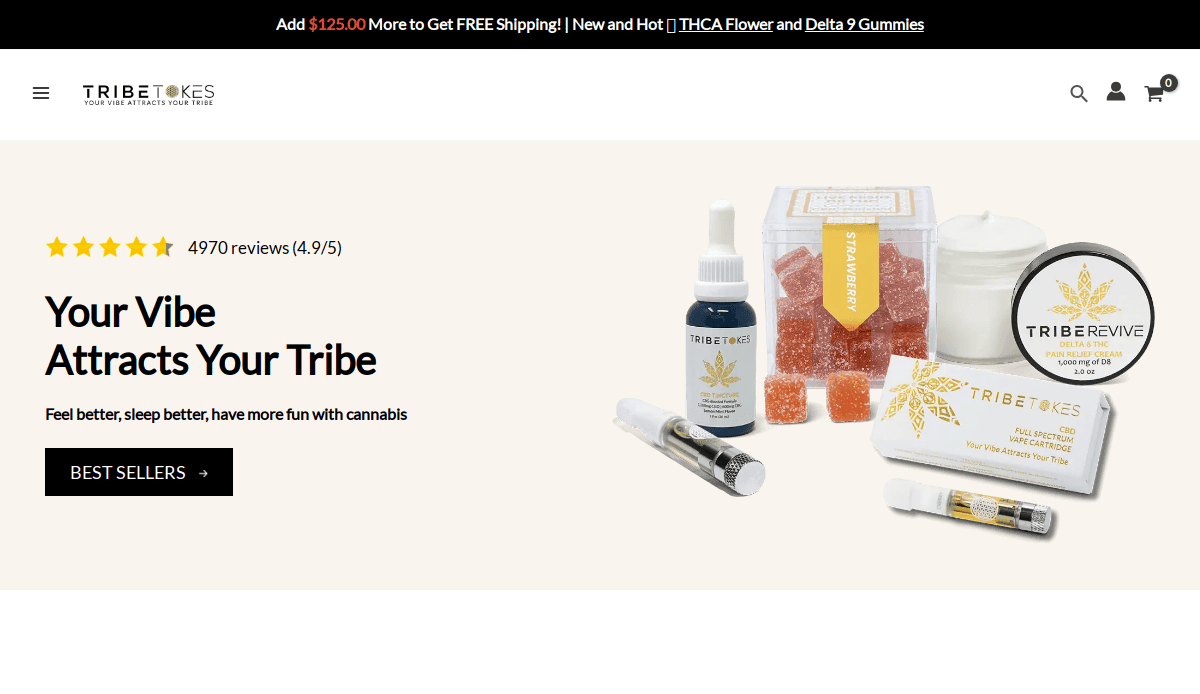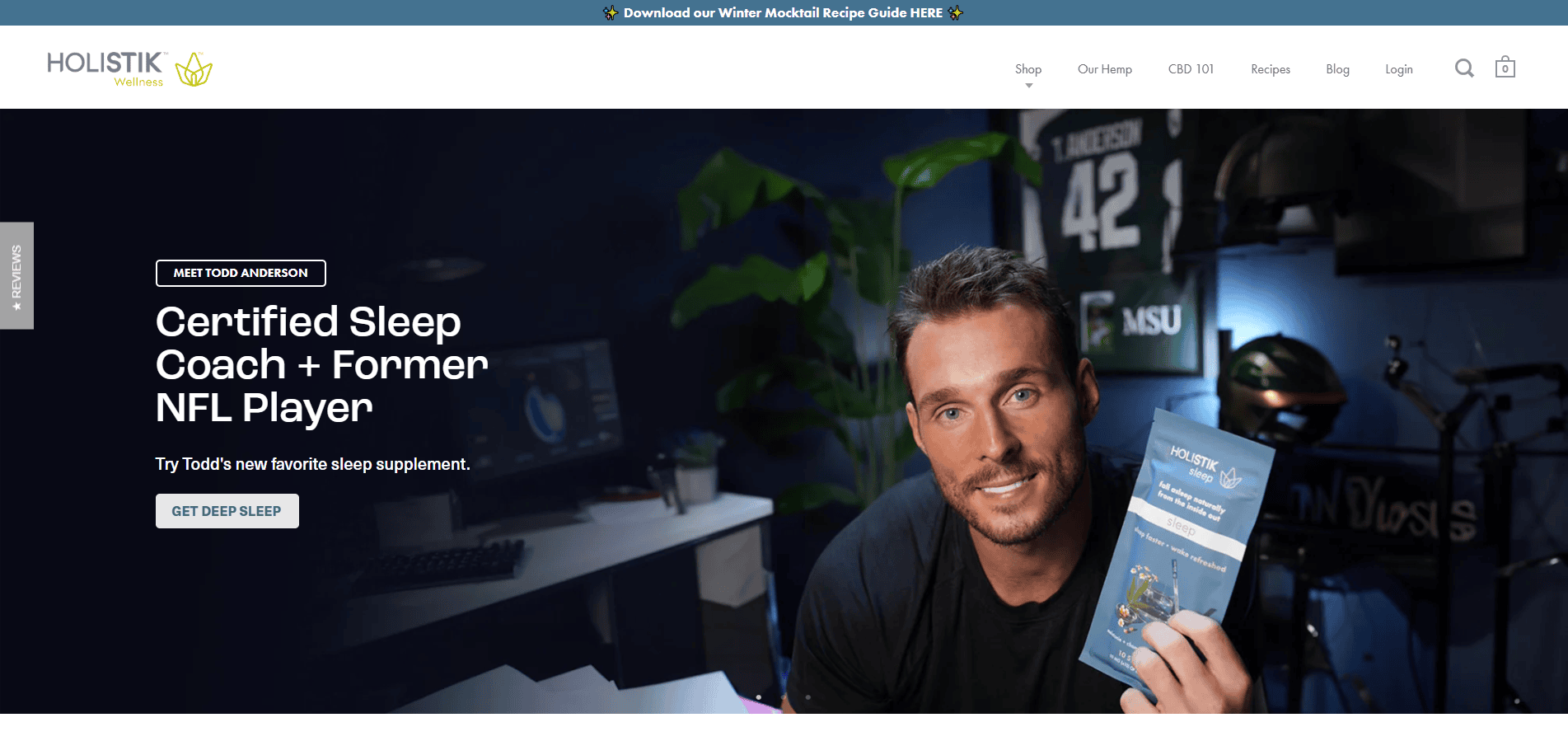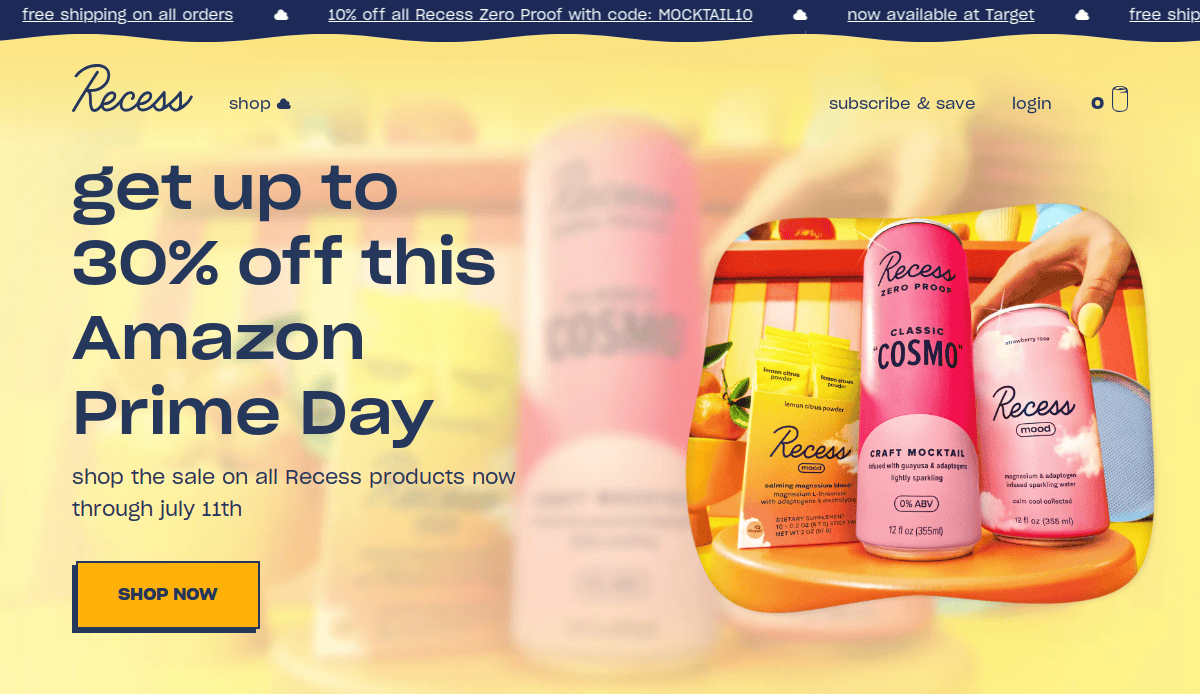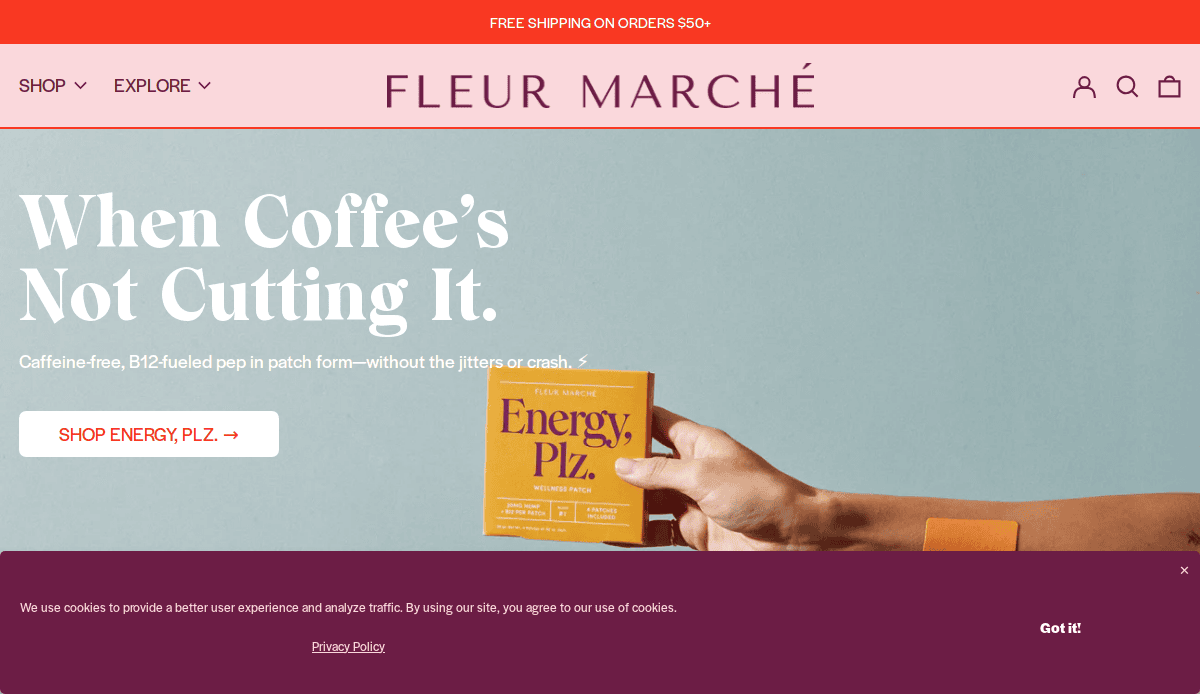Just looking for our Best CBD Website examples list?
Why CBD Website Design Is Critical for Growing Your Brand
In the rapidly evolving CBD market, standing out is no longer optional—it’s essential. Your website is often the first impression potential customers have of your CBD business. Whether you’re selling an e-commerce CBD product line or offering educational cannabis content, your web design will shape the user experience, influence trust, and ultimately determine whether visitors stay or bounce.
A professionally built, mobile-friendly website for your CBD brand isn’t just about visual appeal. It’s a high-impact business asset that fuels conversion rate improvements, enhances your online presence, and speaks directly to the specific needs of your target audience. In the CBD industry, where regulations and consumer expectations intersect, website design goes beyond aesthetics—it’s about building a seamless shopping experience that’s compliant, responsive, and optimized for SEO.
If you’re ready to build a website that captures attention and drives results, this guide will show you how. We’ll cover everything from digital marketing strategy and search engine optimization to product descriptions and content that converts. Whether you’re launching a new CBD website or redesigning an outdated one, it’s time to treat your online presence like the growth engine it truly is.
Website Planning & Purpose: Designing with Strategy for the CBD Industry
Before writing a single line of code or selecting color palettes, successful site design begins with strategic planning. In a highly regulated and competitive space, skipping the planning phase can result in a site that looks good but underperforms, misses critical SEO elements, ignores compliance, or fails to convert traffic into revenue.
Understand the Purpose of the Website
Every CBD business has a unique goal. Some are e-commerce-driven, selling oils, tinctures, and topicals. Others may focus on education, advocacy, or providing B2B services in the cannabis supply chain. The purpose of your website will shape its structure, content, and functionality. Defining whether your primary aim is to generate leads, drive product sales, or build brand awareness helps guide every design decision that follows.
Clarify the Target Audience
In this industry, customers range from health-conscious millennials to older adults seeking natural relief. Your website should be built around the specific needs of your target audience. What questions do they have? What barriers prevent them from making a purchase? What device are they using to browse? The answers to these questions inform everything from navigation layout to content hierarchy to mobile responsiveness.
Align with Legal and Marketing Strategy
Planning also includes compliance. Businesses must adhere to strict rules around claims, age verification, and payment processing. Failure to align your web strategy with legal requirements can lead to takedown notices, fines, or loss of merchant services. This is why your design plan must integrate SEO and digital marketing goals—like content planning, keyword targeting, and trust-building elements—with legal safeguards such as disclaimers, third-party testing visibility, and secure checkout systems.
Map Out Core Functionality
A planned-out site anticipates both business and user needs. E-commerce functionality must include secure transactions, fast load times, and simplified checkout flows. If your CBD business relies on education and lead generation, your site should include well-organized blog sections, downloadable resources, or lead-capture forms. Prioritize features that support conversion and retention.
Ultimately, a well-planned CBD website doesn’t just launch—it performs. It attracts qualified traffic through smart SEO, delivers a professional user experience tailored to your brand, and supports compliance while converting visitors into long-term customers.
Design Principles: Building Trust and Performance into Every Page
Effective site design starts with clarity, credibility, and conversion. In an industry where regulation, skepticism, and misinformation coexist, your website must do more than look good—it needs to establish trust, guide users seamlessly, and drive results. Applying proven design principles tailored for your market ensures your site meets both aesthetic and strategic benchmarks.
1. Simplicity and Clarity
Cluttered websites confuse visitors and erode trust. A clean, minimal layout with clear headlines and concise product descriptions makes it easier for users to understand your offerings and take action. Each element—from navigation to call-to-action buttons—should serve a purpose and support the user’s journey.
2. Visual Hierarchy
Design your CBD website so that the most important information is the most visible. Use size, color contrast, and spacing to naturally guide the eye to key areas like product highlights, benefits, or shopping cart access. This improves readability and helps streamline decision-making.
3. Brand Consistency
A strong brand builds loyalty, and your website should reflect it in every detail—logo usage, color schemes, typography, and tone of voice. Consistency across all pages strengthens brand recognition and professionalism, while inconsistent visuals can undermine your credibility.
4. Responsive Design
Your audience isn’t just browsing on desktops. They’re shopping from smartphones, researching on tablets, and checking reviews on the go. Responsive design ensures your site adapts seamlessly across all screen sizes, improving the user experience and boosting mobile conversions.
5. Accessibility and Readability
Professional websites must be accessible to a diverse audience, including those with visual or cognitive impairments. Use high-contrast colors, alt text for images, and legible fonts. Ensure that content is broken into short paragraphs with clear headings, making it easy to scan.
6. Conversion-Centered Layout
Strategically place calls-to-action (CTAs) where users are most likely to engage. For e-commerce CBD sites, this means prominent “Add to Cart” buttons, easy-to-locate trust signals like lab results, and visible contact options. For service-based CBD businesses, feature lead capture forms and inquiry prompts.
7. Compliance-Friendly Design
Avoid medical claims and unverified statements. Use disclaimers, product labeling, and age-gate features to maintain compliance with federal and state laws. A design that balances persuasion with transparency fosters trust and reduces legal risk.
For a full breakdown of the design-to-launch process, see our step-by-step guide to the web design process.
By embedding these design principles into your website, you create a platform that looks professional and performs, turning casual visitors into confident, loyal customers.
Content & Navigation: Structuring a Seamless CBD Website Experience
Content and navigation are about trust, education, and usability. With regulatory scrutiny, high customer curiosity, and fierce online competition, how you structure your website content and navigation can directly affect your search rankings, customer trust, and conversion rates.
Clear Navigation: Simple, Predictable, and Intuitive
Your website’s navigation should make it effortless for users to find what they need. That means a clearly labeled top navigation bar with logical categories like “Shop CBD Products,” “About Us,” “Learn,” and “Contact.” Use drop-down menus only when necessary, and keep them organized with no more than 5–7 primary links.
E-commerce CBD brands should prioritize filters and sorting tools on category pages, allowing visitors to sort by product type, use case (e.g., anxiety, sleep), or delivery method (e.g., tinctures, gummies). For service-based CBD businesses, navigation should highlight value-driven pages like case studies, blog content, or FAQs.
Homepage Content: Guide First Impressions with Purpose
Your homepage must establish credibility fast. Use a value-driven headline, trust-building elements (such as third-party lab certifications or customer reviews), and direct CTAs. Incorporate brief product spotlights or links to top-selling categories, but avoid overwhelming visitors. Let your content create a natural scroll path that leads to action.
Page Hierarchy: Speak to User Intent
Every page should have a purpose. Your product pages must feature SEO-optimized product descriptions, ingredient transparency, and high-quality visuals. About pages should tell a story—your mission, your standards, your passion for the industry. Educational content belongs on a blog or dedicated resource section, optimized to answer high-intent questions and support your SEO strategy.
Consider building out a “CBD 101” or “Learn” hub where newcomers can understand product types, usage guidelines, and FAQs. This improves SEO and nurtures visitors toward purchase readiness.
Footer Navigation: Support, Trust, and SEO
Don’t underestimate the power of a well-structured footer. Include links to customer support, legal disclaimers, privacy policies, return policies, and trust badges. This reinforces transparency and provides additional navigation paths for search engine crawlers and visitors alike.
Internal Linking: Keep Visitors Engaged
Your navigation shouldn’t only live in menus. Use contextual internal links within your content to guide users deeper into the site. Link from blog posts to relevant products, from product pages to FAQs, and from your homepage to educational resources. This improves SEO, increases time on site, and builds topical authority.
For inspiration on emerging design patterns that enhance content delivery and user engagement, explore our forecast of upcoming web design trends for 2025.
An effective content and navigation strategy transforms your website from a digital brochure into a high-performing experience, guiding visitors with confidence from curiosity to conversion.
Visual Elements: Strengthening User Experience and Brand Trust
In this industry, where consumers are highly discerning and often cautious, visual design is more than just decoration—it’s a powerful tool for building credibility, guiding behavior, and expressing your brand’s identity. Every image, color, and icon you use should be intentional, supporting your business goals and enhancing the user experience.
Professional Product Photography: Build Trust Through Clarity
Your website must feature high-quality, professional product images. Blurry or generic photos instantly reduce credibility. Showcase each CBD product from multiple angles, include zoom functionality, and provide packaging details. Transparent visuals are particularly important for products with dosage, ingredients, or certifications—elements that matter deeply to cautious buyers.
Brand-Aligned Visual Identity
Consistency in color, typography, and imagery is critical for brand recognition. If your brand focuses on wellness and natural health, a palette of greens, neutrals, and calming tones supports that message. A luxury CBD brand may lean into minimalist black-and-white aesthetics with sleek typefaces. Every visual element should reinforce the tone and message of your business.
Icons and illustrations should also reflect your identity. For example, using leaf icons for product benefits or dropper illustrations for dosage can clarify content while visually differentiating your site from competitors.
Clean Layouts That Guide the Eye
An effective visual hierarchy uses size, spacing, and contrast to lead users through a page. Headings should stand out from body text, CTAs should be prominent and surrounded by white space, and important trust signals—like third-party lab reports or secure checkout badges—should be visually prioritized.
Using a grid-based layout ensures consistency across pages and enhances scannability, especially important for mobile-first design. Break content into sections with background color changes or subtle dividers to reduce visual fatigue.
Authentic Brand Photography and Lifestyle Imagery
Don’t rely solely on stock images. Custom brand photography—like behind-the-scenes shots, team photos, or lifestyle imagery showing real customers—builds emotional connection. Showing your products in context (e.g., in daily routines or wellness settings) helps potential customers envision using them, driving higher engagement and purchase intent.
Motion and Interactivity, Used Sparingly
Subtle animations can improve UX—like hover effects on product cards or smooth transitions between sections—but should never overwhelm. Remember, professionalism is key; avoid flashy transitions or unnecessary motion. Keep things clean and purposeful.
For foundational insights on how visual design influences usability and effectiveness, read our guide to the core principles of web design.
Thoughtfully applied visual elements make your website visually appealing, plus they serve as trust signals, engagement tools, and brand amplifiers. When done right, visuals transform a passive browsing experience into a confident path to conversion.
Ongoing WordPress Maintenance: Keeping Your CBD Website Secure, Fast, and Performing
Launching your website is just the beginning. To stay competitive, compliant, and effective in the market, regular WordPress maintenance is essential. This industry operates in a fast-changing environment, and a stagnant website quickly becomes a liability. Ongoing maintenance ensures your site remains secure, performs optimally, and aligns with evolving customer and legal expectations.
Security Updates and Plugin Management
CBD websites are frequent targets for security threats due to the high-value transactions and personal data involved. Running outdated themes, plugins, or WordPress core versions can expose your site to vulnerabilities. Regular updates prevent exploits and ensure compatibility with the latest security protocols. Plugins should be reviewed monthly for patches, and unnecessary add-ons removed to reduce risk and bloat.
Performance Optimization
Speed is a ranking factor for search engines and a major factor in UX. Slow-loading CBD product pages or checkout steps can drive potential customers away. Maintenance includes image compression, caching configuration, database cleanup, and code review to ensure your site loads quickly across all devices. This is especially critical for mobile traffic, which often accounts for the majority of visitors in this industry.
Backup Systems and Site Recovery
Accidents happen—whether it’s a plugin conflict, a failed update, or a malicious attack. Automated daily backups stored off-site provide peace of mind. If something goes wrong, you can quickly restore your website without data loss or extended downtime. An effective backup strategy is non-negotiable for sites managing transactions and sensitive customer information.
SEO Monitoring and Technical Health
Ongoing maintenance also means keeping an eye on broken links, crawl errors, redirect chains, and duplicate metadata. These technical issues hurt your site’s search engine performance over time. Periodic audits ensure that your site remains indexable, mobile-friendly, and structured in a way that supports your SEO efforts.
Compliance and Legal Updates
The CBD regulatory landscape shifts frequently. Maintenance includes updating content, disclaimers, age verification tools, and e-commerce policies to ensure compliance. It’s also important to monitor payment gateways and adjust integrations as financial institutions modify their stance on cannabis-related businesses.
Uptime Monitoring and Support
A well-maintained website should run 24/7 without interruptions. Uptime monitoring tools alert your team if the site goes down, ensuring issues are resolved before they impact sales. Pairing this with proactive support—available to troubleshoot technical issues or apply urgent updates—protects your brand and revenue.
Consistent WordPress maintenance keeps your website reliable, compliant, and capable of scaling with your business. It’s the backbone of a strong digital presence and a critical safeguard for your online investment.
Best CBD Website Design Examples
1. CBD American Shaman
Location: Kansas City, MO
Key Takeaways:
- Clean and inviting visual design with a soothing green and white color scheme.
- User-friendly navigation with well-defined categories.
- Comprehensive educational resources and live chat support.
2. CBD Living
Location: Corona, CA
Key Takeaways:
- Modern design with well-organized product pages.
- High-quality images and detailed product descriptions.
- Features customer reviews to build trust and engagement
3. CBD BioCare
Location: Naples, FL
Key Takeaways:
- Professional and inviting aesthetic with a green and white color scheme.
- Informative content including product descriptions and educational materials.
- Emphasis on natural and organic products.
4. CBDistillery
Location: Denver, CO
Key Takeaways:
- User-centric design with easy navigation.
- Transparent product information with third-party lab results.
- Educational blog content to inform customers.
5. Green Wellness Life
Location: Grand Rapids, MI
Key Takeaways:
- Comprehensive range of high-quality CBD products.
- Third-party lab testing for product transparency.
- User-friendly website with detailed product categories.
6. Joy Organics
Location: Fort Collins, CO
Key Takeaways:
- Clean, modern design with a focus on wellness.
- USDA-certified organic products.
- Educational resources for new users
7. Lazarus Naturals
Location: Portland, OR
Key Takeaways:
- Affordable pricing with assistance programs.
- Comprehensive product range including pet products.
- Transparent lab testing and product information.
8. Charlotte’s Web
Location: Boulder, CO
Key Takeaways:
- Pioneering brand with a strong reputation.
- Detailed product information and usage guides.
- Emphasis on quality and consistency.
9. Medterra
Location: Irvine, CA
Key Takeaways:
- Broad-spectrum and isolate CBD products.
- Transparent sourcing and manufacturing processes.
- Educational content to guide users.
10. cbdMD
Location: Charlotte, NC
Key Takeaways:
- Wide range of THC-free products.
- High-quality manufacturing standards.
- Informative blog and customer resources
11. NuLeaf Naturals
Location: Denver, CO
Key Takeaways:
- Full-spectrum CBD products with high potency.
- Simple, user-friendly website design.
- Commitment to quality and transparency.
12. CBDfx
Location: Chatsworth, CA
Key Takeaways:
- Extensive product range including edibles and topicals.
- User-friendly website with detailed product filters.
- Educational content and customer reviews.
13. Foria Wellness
Location: Los Angeles, CA
Key Takeaways:
- Focus on intimacy and wellness products.
- Elegant website design with informative content.
- Emphasis on natural, plant-based formulations.
14. Cornbread Hemp
Location: Louisville, KY
Key Takeaways:
- USDA-certified organic full-spectrum products.
- Transparent lab testing and product information.
- Educational resources for customers.
15. Sunday Scaries
Location: San Diego, CA
Key Takeaways:
- Targeted products for stress and anxiety relief.
- Engaging brand personality and design.
- Informative blog and customer testimonials.
16. TribeTokes
Location: New York, NY
Key Takeaways:
- Stylish, modern website design.
- THC-free products with detailed descriptions.
- Strong emphasis on customer education.
17. HOLISTIK Wellness
Location: New York, NY
Key Takeaways:
- Innovative CBD delivery methods.
- Clean, minimalist website design.
- Educational content and product transparency.
18. Recess
Location: New York, NY
Key Takeaways:
- CBD-infused beverages with adaptogens.
- Vibrant, engaging website design.
- Lifestyle-focused branding and content.
19. Fleur Marché
Location: Los Angeles, CA
Key Takeaways:
- Curated selection of CBD products.
- Stylish, user-friendly website design.
- Emphasis on wellness and self-care.
20. Vena CBD
Location: Newport Beach, CA
Key Takeaways:
- Broad range of CBD and THC-infused products.
- Transparent sourcing and third-party testing.
- Informative content and customer support
Turn Your Vision Into a Successful CBD Website
Today, your website is your storefront, educator, brand ambassador, and sales engine all in one. Whether you’re just starting to create a website for your CBD business or looking to elevate an existing cannabis website, the quality of your design will directly impact your results.
A well-designed CBD website isn’t just about aesthetics. It builds brand identity, increases trust, and simplifies the path from browsing to buying. From mobile phones to desktops, your audience expects fast-loading pages, easy navigation, compelling content, and product offerings they can trust. In a space where the sale of CBD products is influenced by search visibility and user trust, your website’s overall design, structure, and SEO can make or break your success.
If you want to attract more traffic, build a strong digital presence, and run a high-converting online CBD store, working with a trusted web design company is the smartest next step. A modern design, combined with smart website features and a compliance-ready structure, helps CBD companies like yours compete with major brands.
It’s time to invest in a business website that reflects your value and sets your CBD brand apart. Ready to build an engaging website that drives higher conversion and supports your long-term goals? Schedule your free consultation with us today, and let’s create the best CBD website design for your business.
Your CBD Website Design & Strategy FAQs, Answered
Why is a well-designed website important for a CBD business?
A well-designed website builds trust, improves UX, and helps your business convert visitors into buyers. In the rapidly growing industry, a cluttered or outdated site can deter customers and lower credibility. A clean layout, responsive design, and intuitive navigation make the website more effective for selling and educating visitors on the benefits of CBD.
What pages should a CBD e-commerce website include?
A successful site should include essential pages such as Home, Shop, Product Pages, About Us, Contact, FAQs, Blog, and Legal Disclaimers. Each page must be designed to support compliance, deliver information about CBD, and streamline the buyer’s journey. A mobile version is also critical since most traffic now comes from smartphones.
How can CBD SEO help grow my online store?
It improves your visibility on search engines, helping you rank for key terms like “CBD oil near me” or “CBD for anxiety.” It involves optimizing digital content, product descriptions, site speed, and mobile usability. Pairing optimization with ongoing updates and internal links (like our guide on ADA compliance) strengthens your authority and attracts more qualified traffic.
What design features improve conversions on a CBD website?
Design features that drive conversions include high-quality product images, trust signals (e.g., third-party lab results), secure checkout options, clear CTAs, and fast loading times. Making the website easy to navigate and ensuring the website provides helpful information about CBD also increases user engagement and reduces bounce rates.
Is it legal to sell CBD online?
Yes, but it’s complex. Selling CBD online requires compliance with federal and state laws, especially regarding product labeling and advertising. Ensure your e-commerce website includes disclaimers, age verification, and only promotes the benefits of CBD in approved ways. Work with a designer who understands compliance in this space.
How does social media marketing support my CBD website?
Social media marketing increases awareness, drives traffic to your website, and allows you to engage with a loyal audience. Sharing educational posts, product updates, and success stories via Instagram or LinkedIn complements your optimization strategy and strengthens your digital footprint.
What kind of digital content should I include?
Publish blog posts that answer common questions, highlight the benefits of CBD, or explain how different products work. You can also post videos, customer testimonials, or wellness tips. A consistent digital content strategy helps your business become a trusted authority and improves rankings.
Why is mobile optimization critical for CBD websites?
The majority of users now browse and shop from mobile devices. A mobile-friendly design ensures your site loads fast, is easy to read, and has smooth navigation across screens. Without a mobile version, even the most beautiful site may fail to convert visitors.
How often should I update my website?
Regular updates are necessary to maintain security, compliance, and performance. Update content to reflect changes in product offerings, blog about new developments, and monitor your SEO performance. For guidance, consider setting up ongoing WordPress maintenance services to keep your site effective.
Can a website help build long-term brand loyalty?
Absolutely. A CBD website uses professional design, thoughtful digital content, and a focus on user experience to build lasting connections. When your website is designed with care and continuously optimized, it helps your business grow, and it becomes the foundation of your brand’s reputation.

